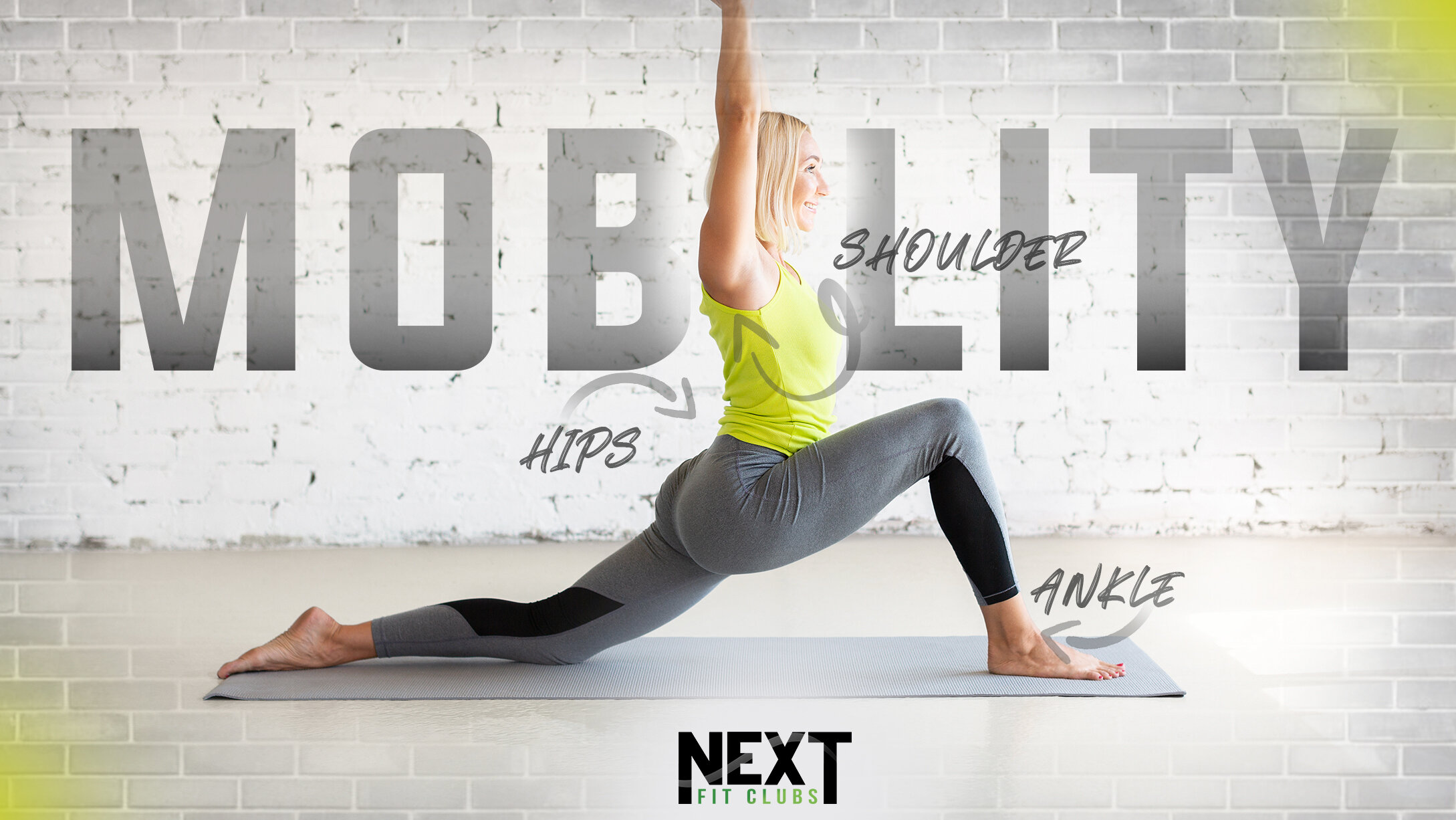Understanding MobilityÂ
Struggling to hit depth in your squat? Ankles popping up every time you lunge? Unable to raise your arms straight overhead? If you answered yes to one of these questions, then poor mobility and/or instability could be the cause. Donât worry though, youâre not alone. Mobility and stability problems affect almost all weight lifters at some point in their lives. Luckily, there are straightforward methods to screen for the exact problem and develop the appropriate solution for you. Read on to find out how mobility work could be the missing link in your training.
TERM
First, letâs define âMobility.â Mobility is the range of motion that a joint allows while maintaining stability.
SO WHAT?
Why is mobility important? âAdequateâ mobility ensures that movements elicit sufficient stimulus to promote adaptation (both increased strength and muscle growth). Adequate is in quotations because the hip, knee, and ankle mobility an olympic weightlifter requires to snatch (including a squat âass to grassâ) versus the mobility required for an every day lifter to squat to depth are not the same thing. This is goal dependent.
Most Common Mobility Problems and How to Screen for Them
HIPS- Insufficient hip mobility is common, and may be the reason you arenât hitting depth in your squat. A simple way to check is to perform a bodyweight squat. Toes can be turned slightly outward if that feels most comfortable. If unable to squat with hips below parallel (hip joint is parallel to or below knee joint), then insufficient hip mobility is your diagnosis.
ANKLES- Another reason why some struggle with squats and lunges is ankle immobility. To determine if insufficient ankle mobility is your achilles heel, perform the half kneeling dorsiflexion test. Start half kneeling with your knee close to a wall in front of you. Next drive your knee forward attempting to touch your knee to the wall, while keeping your heel firmly on the ground. If you can continue to touch your knee to the wall while maintaining heel down once you pull your foot five inches away from the wall, you have sufficient ankle mobility. If your heel begins to pop up as you push your knee forward before you reach 5inches, you lack sufficient ankle mobility to properly perform squats and lunges.
OVERHEAD- Overhead mobility is crucial to performing the Snatch, Overhead Squat, Strict and Push Press. One common way to screen: perform a wall angel. Start with your back and head touching a wall, with your feet a few inches away from the wall. Then, raise your arms up into a âgoal-postâ position and try to flatten your arms and hands against the wall while ensuring your low back remains in contact with the wall. If you were unable to keep your arms and back comfortably flat against the wall, overhead mobility, specifically tightness in your thoracic spine, lat and pec muscles, is the culprit.
IMPROVING MOBILITY
Two caveats. One, itâs important to know that a lack of mobility could be due to joint restrictions, or stiffness in the muscles/fascia surrounding the joint. For that reason, a variety of joint mobilizations, corrective exercises, and stretches should be implemented before determining what is most effective for you. Another important caveat is to ensure that corrective exercises and mobilizations are included in addition to your main compound movements. Performing movements like the hack squat and countermovement squat are helpful to increase strength while also developing greater mobility.
HIPS-
The Hip Joint is a relatively stable joint. Additionally, innate hip mobility will largely depend on anatomical differences in individualsâ leg and pelvis bone shapes. This is why we see everyoneâs squat stance to be completely unique to them. However, this does not mean that hip mobility cannot be improved upon!
-
Joint Mobilizations: Start by attaching a thick resistance band to the bottom of a rig (any sort of stable pole or rack will do). Insert one leg into the band and pull the band high up right into your hip crease. Then walk out to the side and get into a lunge with your back knee flat on the ground. Slowly move your knee side to side. Repeat 15-20 times.
-
Soft Tissue: Pigeon stretch. Start by placing one bent leg on top of a high box with your shin parallel to the edge of the box. With your other foot take a large step back, then hinge at the hips with a flat back and lean over your elevated leg. Repeat on the other side. Another great activation stretch is the goblet squat. Emphasis is not on a heavier weight, but coming up out of your squat a few inches for three seconds, then sinking down into your squat to relax. Repeat 5 times.
ANKLES-
-
Joint Mobilizations: Start by attaching a relatively thick resistance band to the bottom of a rig. Place the band on your ankle joint and walk your foot forward to create tension on the band while in a lunge position. Then, elevate that foot on a weight plate. From there, push your knee forward over your toe. You should feel a nice stretch in your ankle. Repeat 10 times per side, holding for a few seconds each time.Â
-
Soft Tissue: Using a foam roller can help reduce any stiffness or tightness in the muscles surrounding the ankle joint. Specifically, slowing rolling your calves.
OVERHEAD-
-
Joint Mobilizations: This movement targets the thoracic spine. Start by taping two lacrosse balls or tennis balls together to form a âpeanutâ shape. Lay on your back with the âpeanutâ between your shoulder blades and your arms crossed over your chest. Then perform a small crunch, ensuring just your shoulders come off the ground. 2-3 sets of 15-20 reps with a 1-2second hold at the top is recommended.Â
-
Soft Tissue: As mentioned, lat stiffness could be the reason for lacking OH mobility. To loosen the lat muscles, lay on the edge of a foam roller and slowly massage the foam roller into your lat. To loosen any pec stiffness, place a lacrosse ball between your chest and a wall, then slowly massage the ball into your pec muscles.Â
-
Stretch: the Child Pose is an excellent stretch for lat and thoracic spine stiffness. Start by sitting back on your heels with your arms stretched out in front of you. Taking a deep breath, let your chest sink down toward the floor. Repeat. An effective pec stretch is called the âcorner stretch.â Start facing the corner of a room, placing your hands and forearms on opposite walls, then pushing your chest toward the corner.
FINAL THOUGHTS
While it may seem like a daunting task to determine your mobility/stability weaknesses and adopt the modalities to improve them, by doing so and practicing consistently, you will ensure you get to lift weights pain/injury free for the long-haul!Â
-Coach Caroline
P.S. Special thanks to Squat University and Dr. Aaron Horschigâs content which has been integral to my knowledge as a coach.





0 Comments